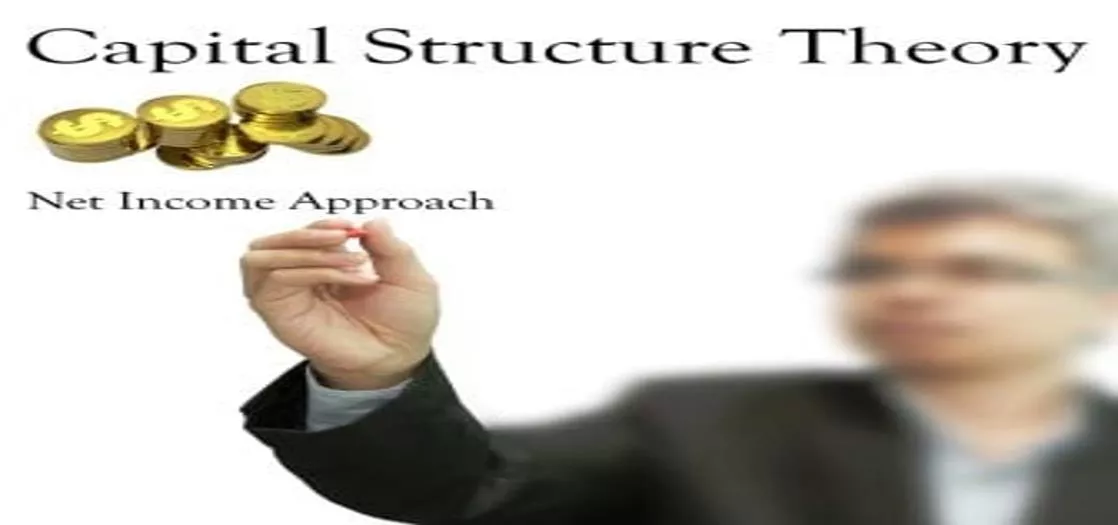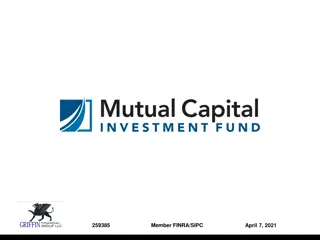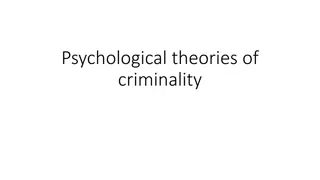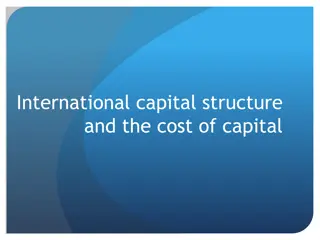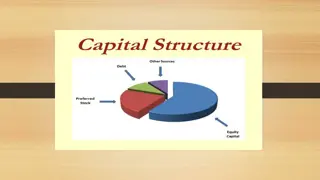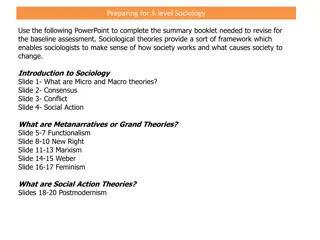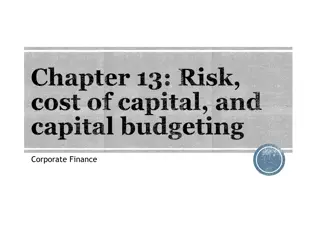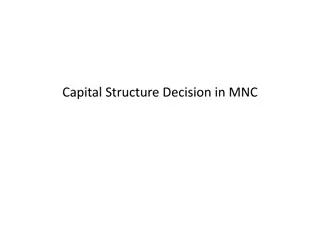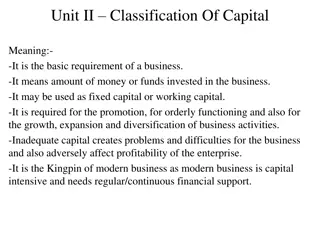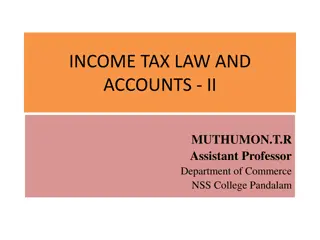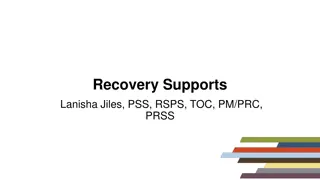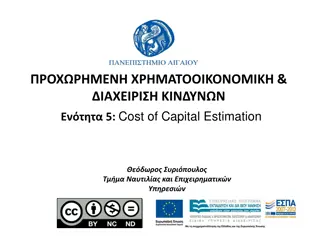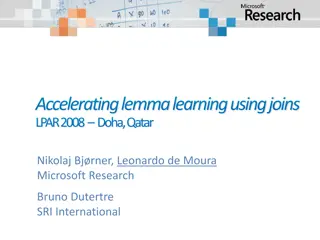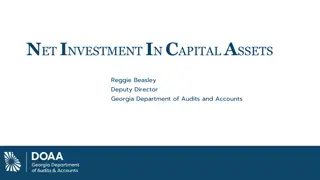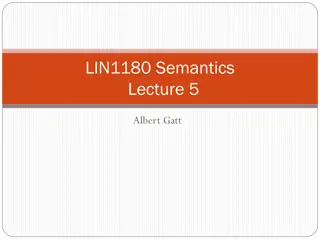Theories of Capital Structure and their Applications
The theories of capital structure explore the relationship between debt and equity in a firm's financing decisions. By optimizing the mix of debt and equity, a company can minimize its cost of capital and maximize its value. The Net Income Approach highlights the benefits of using debt to lower the overall cost of capital. It suggests that firms can increase value by increasing the proportion of debt in their capital structure. This theory is applied by determining Earnings Before Interest and Taxes, calculating market values of equity and debt, and computing the overall cost of capital.
Download Presentation

Please find below an Image/Link to download the presentation.
The content on the website is provided AS IS for your information and personal use only. It may not be sold, licensed, or shared on other websites without obtaining consent from the author.If you encounter any issues during the download, it is possible that the publisher has removed the file from their server.
You are allowed to download the files provided on this website for personal or commercial use, subject to the condition that they are used lawfully. All files are the property of their respective owners.
The content on the website is provided AS IS for your information and personal use only. It may not be sold, licensed, or shared on other websites without obtaining consent from the author.
E N D
Presentation Transcript
Theories of Capital Structure Theories of Capital Structure GeneralAssumptions in Capital Structure Theories There are only two sources of funds, i.e., debts and equity (no preference share capital). The total assets of a firm and its capital employed are fixed. All earnings are distributed to equity shareholders. The firm earns operating profits and it is expected to grow. The business risk assumed to be constant and is not affected by the financing mix decision. (no change in fixed cost). There are no corporate or personal taxes. (no taxation) The investors have the same subjective profitability distribution of expected earnings.
Theories of capital structure are as Theories of capital structure are as- - Net Income Approach Net Income Approach Assumptions Apart from the general assumptions, additional assumptions are as follows :- There are no corporate taxes Kd= Debt Capitalization Rate Ke= Equity Capitalization Rate The cost of debt (Kd) is always less than cost of equity (Ke). Kdand Ke, remains constant at all levels of debt equity mix.
Theory Debt is a cheaper source of finance than equity due to tax saving effect and investor's risk expectation. Use of cheaper debt funds in total capital structure will reduce the overall or weighted average cost of capital. Hence, as the degree of financial leverage increases, the weighted average cost of capital will decline with every increase in the debt content in total funds employed. Value of firm =??????? ?????? ???????? ??? ????? ???? ??? ??????? ???? ?? ??????? The value of firm will increase for every decline in weighted average.
Whereby, the debt content is reduced, the reverse will happen, i.e. weighted average cost of capital will increase thereby reducing the value of the firm. Thus, a firm can increase its value and lower the overall cost of capital by increasing the proportion of debt in the capital structure. The value of firm will be maximum at a point, where WACC is minimum. Thus, the theory of net income suggests total or maximum possible debt financing for minimizing the cost of capital.
Application Determine Earning Before Interest and Taxes (EBIT). Compute EBT (Net Income) = Earning Before Interest and Taxes Interest on debts funds. Compute Market Value of Equity(E) EBT (Net Income)/Cost of Equity (Ke) Compute Market Value Debt (D) = Interest/Cost of Debt (Kd) Market Value of Firm (V) = E + D =Market Value of Equity + Market Value of Debt Compute Overall Cost of Capital (K0) = EBIT/Value of Firm (V) Where, there is tax then (EBIT-Tax Rate)
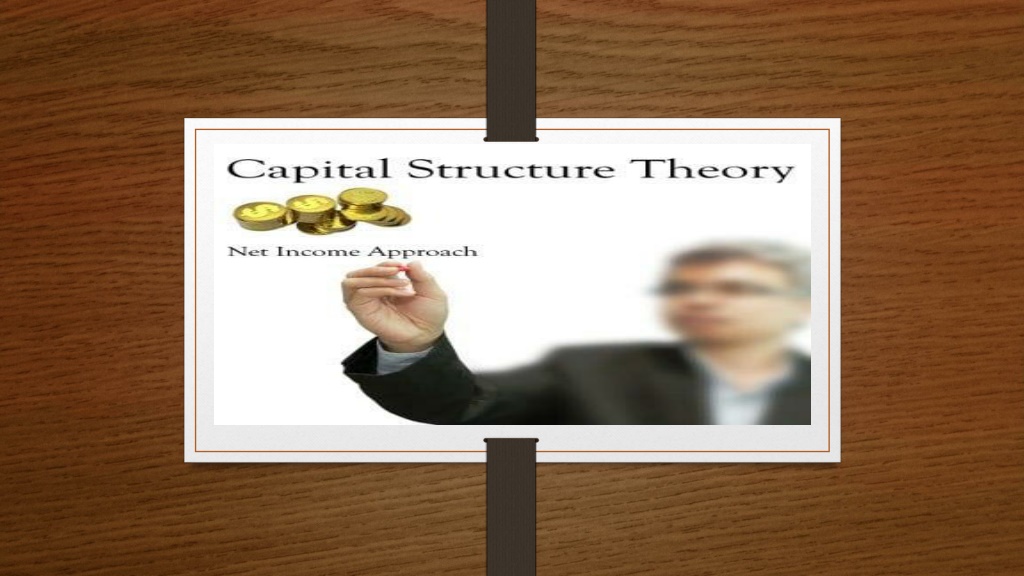
 undefined
undefined

